Matador Network's Blog, page 629
July 13, 2021
Your partner deserves an epic babymoon. Here’s how to plan one.

For avid travelers, a babymoon is an ideal way to toast to a new, and profoundly different, chapter of life. When expecting a child, what better way to celebrate (and talk through your feelings of existential dread) than by taking one final, pre-parenthood jaunt. Before I get into all the reasons why you absolutely should take your partner on a babymoon and walk you through how to plan one, let me be loud and clear about one thing — when it comes to travel, the old ways of doing things aren’t going to cut it anymore. The good news is that your forthcoming parenthood doesn’t have to change why you travel, or even how. The biggest change you’ll face is physiological. Let’s dive into how to plan a babymoon, with a few anecdotes mixed in to illustrate how we eased the anxiety.
1. Take the babymoon during the second trimester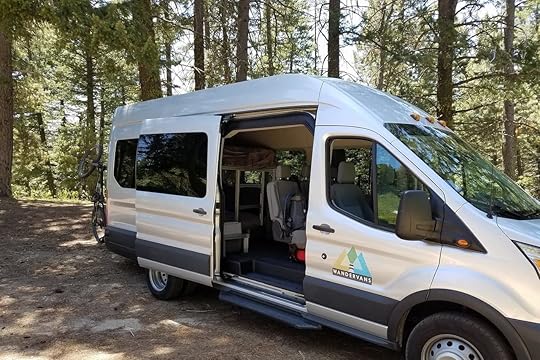
Photo: Wandervans/Facebook
When planning a babymoon, take into account how you and your partner traveled in the past — including comfort level, desired amenities, and targeted activities — and toss those experiences into a folder labeled “the past.” You’re now in a new realm of travel. It’s called “the future,” and your babymoon is going to provide a slight glimpse into how your travel experience is going to pan out from here on. A babymoon doesn’t have to be a “new” kind of travel. But it should be a new take on how you plan the type of travel that you and your partner enjoy doing.
Being born Coloradans, my partner, Alisha, and I are both outdoorsy and tend to plan most of our trips around activities including hiking, biking, or camping. We also like to work in some nice meals and perhaps a cultural experience or two. Our babymoon was no different. The trip consisted of four hotel nights — two in Seattle and two in Portland — and four nights in a Wandervans campervan cruising the Pacific Northwest coast. We traveled while my partner was between 19 and 21 weeks pregnant, and were able to enjoy a few hikes in the mountains and long walks on the shores of Washington and Oregon.
A babymoon in your case might be a week at a resort or a visit to the place where you and your partner first met each other. No matter what your destination, timing is key. Plan your babymoon during the second trimester. Primarily, because morning sickness is most common during the first trimester. The two of you could subsist for a week on smoothies and vacuum-sealed ice cream, but it’s far more enjoyable — especially for your partner — to not have to spend the entire vacation afraid to eat a full meal for fear of sending it right back out.
My partner and I found the period between 14 and 26 weeks to be the most “normal,” where she felt good (most of the time) and could participate in activities like hiking and dining out without being incredibly uncomfortable or self-conscious. Once past the 30-week mark, the thought of walking eight blocks at a hurried pace in order to not miss that dinner reservation or trudge up a beach dune to catch the sunset over the ocean sounds increasingly unappealing, if not outright undoable.
In terms of overall experience, you’re going to get the most out of each day during the second trimester. While intermittent bouts of napping are common, in general, your partner’s sleep schedule and energy level are likely to be more optimal for travel during this time than at any other point during pregnancy. It’s also the safest trimester during which to fly, so if your babymoon takes you cross-country as ours did, this is absolutely the time to do it. We also had the unforgettable experience of feeling our daughter’s first big “kicks” while on a ferry between Bainbridge Island and Seattle, a story certain to be part of my toast at her wedding, if and when that day comes.
2. Do your research, but leave plenty of time for relaxation
Photo: The Heathman Hotel Portland/Facebook
Choose a location that appeals to you both and over-plan on the key details. For us, we booked hotels in Seattle and Portland and a campervan to shuttle us in between in advance. We’d always wanted to see the Pacific Northwest coast, and wanted to visit friends in Portland en route. Whereas in the past we may have chosen to stay with our friends or booked an Airbnb near them, we instead opted for a suite at the historic Heathman Hotel downtown. The goal was two-fold — the first being to position ourselves close to at least one legendary brunch, within walking distance of the famed Powell’s City of Books, and nearby to a place where I could treat her to a nice dinner. The second reason we selected the Heathman was due to the hotel’s boutique, high-end vibe.
Any pregnant traveler, even the most seasoned outdoors person out there, deserves to be spoiled on a babymoon. There was no better property at which to do this than the Heathman. While we had originally planned to ride the gondola, check out a museum or two, and rent a kayak for a day on the river, relaxing and doing little more than eating and reading proved to be the call of the weekend. The hotel’s ambience actually encouraged us to hang out at the hotel. We had a soft, comfortable bed with a view out over the city, and the hotel’s library — lined with thousands of books — proved the perfect place to relax and turn some pages. Two books and one food truck pod later, we were relaxed and ready to spend a few nights camping.
For the camping portion of our babymoon, we opted for a reasonably decked-out van rental that included a comfortable bed, a camp stove, and a mini-fridge. All we had to do was swing by the grocery store and stock up on food and we were set for the beaches of Oregon and the hiking trails of Olympic National Park. She slept relatively well in the camper van, though we did have to swap bed positions from how we normally sleep at home because we determined one side to be more firm and thus better for her to sleep on her side. Where in our pre-pregnancy travels we would likely have searched for dispersed campsites as we needed them, we booked all of our campsites in advance using recreation.gov and Hipcamp. This proved ideal as we knew where we’d be sleeping each night and could pace our driving and daily activities to accommodate.
Having the hard details set proved key throughout the trip. Our hotels and campsites booked, we were free to hit a hike or sleep in and head to a late brunch without having to worry about where we were headed next. We left days open to adventure only as aggressively as we felt in the moment. This proved key — minimizing stress is the most important factor to a successful babymoon.
3. Sneak a surprise in there somewhere
Photo: Anel Alijagic/Shutterstock
After four nights of camping, we checked into the Hotel Monaco in Seattle ready to chill for two nights before flying home to Colorado. This hotel was also not chosen by accident — the famous Pike Place Market is a five-minute walk away. Because we’d been on the go for nearly a week, we left most of a day open to exploring the market. The late afternoon and evening were reserved for the Space Needle and Chihuly Garden and Glass Museum. The hotel staff left a welcome basket for us in the room upon check-in, a nice complement to its impressive offering of in-room spa services — a hint to you, discerning partner of the impregnated. Not to toot my own horn here, but even a few minutes of research (and an advance booking) can ensure your partner concludes their babymoon being as relaxed as possible.
On our last evening, I ordered Indian food — Alisha’s favorite — to be delivered to the hotel shortly after we arrived back at the room. We lounged on the couch, ate dinner, and relaxed over a movie. It was a fitting end to a week that saw us cover some 600 miles, sleep in six different places, and complete a six-mile hike in the pouring rain inside Olympic National Park. It was still too early to instill a love of travel in our daughter, but we’d proven to ourselves that adventure can still be a part of our lives as we move into parenthood. For us, that was the ultimate babymoon win. 
The post Your partner deserves an epic babymoon. Here’s how to plan one. appeared first on Matador Network.
You can spend the night in an NYC ice cream truck for less than $10
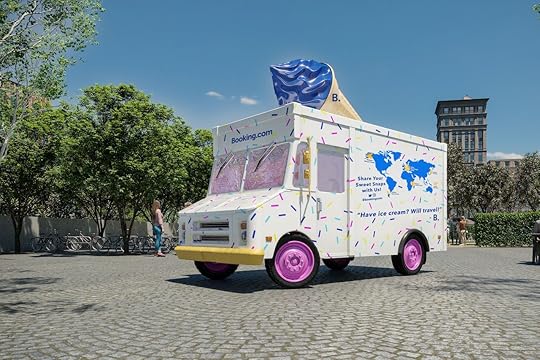
For much of the US, this has been the summer of heatwaves. Death Valley in California broke a new record when it hit 130 degrees Fahrenheit in early July, and many parts of the country — particularly the Pacific Northwest — are dealing with their own record-breaking temperatures.
Staying cool, clearly, is a problem. And what better way to beat the heat than to seek refuge inside an ice cream truck, the coolest place on wheels you can think of?
Travel booking site Booking.com is celebrating National Ice Cream Day on July 18 by giving a few people an overnight stay in New York City in a fully functioning ice cream truck. Even though it’s fully stocked, it’s not filled solely with metal fridges. There’s a comfy looking bed, a trendy neon sign, and plenty of eye-catching (aka Instagram ready) design touches. Judging from the pictures, the stay looks a whole lot more enjoyable than that $400-per-night, 300-square-foot hotel room in downtown Manhattan.

Photo: Booking.com
The truck will park in Union Square Park. The people who are chosen as live-in ice cream truckers will have an appropriately themed itinerary tha includes an ice cream shop walking tour, tickets to the Museum of Ice Cream, and plenty of time to take advantage of the milkshake making station and all-you-can-eat toppings bar inside the truck itself. While every region of the US has its own favorite ice cream truck treat, it’s hard to beat having all of the options laid out right in front of you.
To win one of the two overnight spots in the ice cream truck, go to Booking.com on July 16 at 10:00 AM EST. The possible dates are for Saturday, July 17, and the following Sunday. The cost is just $7.18 — a reference to National Ice Cream Day on July 18.
You might not ever have the chance to sleep in a stocked ice cream truck if you don’t win, but at least NYC has plenty of ice cream trucks where the rest of us can pick up frozen treats in the sweltering outdoors.
The post You can spend the night in an NYC ice cream truck for less than $10 appeared first on Matador Network.
The cheapest countries in the world for designer shopping in 2021

New York City’s Fifth Avenue, London’s Bond Street, Milan’s Via Monte Napoleone, all have one thing in common: They’re the world’s most iconic streets for designer shopping. But if you’re actually in the market for luxury, fashionable goods, where do you go to snap up the latest designer gear at an affordable price?
New research from money.co.uk has analyzed the cost of designer shopping from around the world in 2021 and produced a list of the cheapest and most expensive countries to purchase luxury, fashionable goods. If you’re saving up for a Prada leather bag or Cartier Love Bracelet, here are the cheapest and most expensive locations where to buy them.

Photo: money.co.uk
The Chanel 2.55 handbagThis is one of the most sought-after and classic handbags in the world and the price of this item can vary hugely depending on where you’re shopping. The data shows that the cheapest place to purchase this timeless piece is the United States, costing an average of $6,800, whereas in Australia this will set you back a whopping $8,331.
The Prada Galleria Saffiano leather handbagThe Prada Galleria Saffiano is another must-have in the designer world. Russia comes in first as the most affordable place with a price of $2,598, in comparison to South Korea where it’s on the market for $3,124.
The Fendi White Canvas Baguette bagThe Fendi Baguette bag is a beautiful accessory with an embroidered FF motif and Fendi clasp. Purchasing this in EU countries is a smart choice as you can pick this up for $2,625. China tops the charts with the most expensive listing of this item, pricing it at $3,353.

Photo: money.co.uk
The Cartier Love BraceletEighteen-carat yellow gold, this high-end bracelet is one of the most popular jewelry pieces in the world. If you’re looking to purchase this for a loved one and you’re in the US, you’re in luck. You can pick this up for as little as $6,500. Norway on the other hand has it coming in at $8,673.
The Burberry Chelsea trench coatThis trench coat has been sought after for over 100 years and is a staple in the wardrobes of many fashionistas around the world. If you’re interested in investing, Russia comes in again with the most affordable price at $1,884. China’s shops charging an average of $2,577 for the slim-fitting coat.
After going through all of the average costs of designer accessories, clothing, jewelry, and bags it might come as a surprise that, according to this research, the US and Europe are the cheapest places in the world to shop. So much so that if you’re considering purchasing a particular item, it might be smart to combine a European vacation and shopping trip together. 
The post The cheapest countries in the world for designer shopping in 2021 appeared first on Matador Network.
July 12, 2021
Why a Nile cruise is the most comfortable way to see Egypt’s beautiful temples
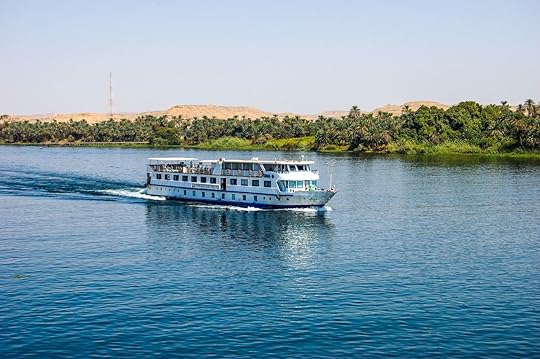
Until the 19th century, the Nile was Egypt’s artery, transporting goods, effigies of gods, mummies, and people. But cruising the Nile for leisurely purposes was perhaps most famously endeavored in 47 BC, when Julius Caesar and Cleopatra VII, Egypt’s final and most illustrious queen, are said to have gone on a sightseeing tour up the Nile. Equally enamored with Cleopatra and the sumptuous riches of her kingdom, Caesar ensured that Egypt would remain sovereign for the rest of his tenure at the helm of the Roman Republic.
Today, over two thousand years after the sailing of the Nile by these historical characters, the tradition lives on. Cruising the Nile has become a highlight of any visit to Egypt, whether you’re a queen, a statesman, or just a regular tourist. This is, perhaps, because it’s the best way to see the country’s extant temples. Unlike ancient times, however, the modern spin on a Nile cruise can take many forms depending on your budget and interests.
Cruising the Nile vs sightseeing by roadPlanning a trip to Egypt can be a daunting task since the country is geographically enormous. And it doesn’t help that its major tourist sites are far apart: There’s Cairo and Alexandria in Lower Egypt (the northern half the country, bounded by the Mediterranean) separated from Luxor, Aswan, and Abu Simbel in Upper Egypt by an overnight train or a 12+ hour bus ride.
This is where cruising comes in handy. A Nile cruise is the most efficient way to see Upper Egypt.
The other dimensions to consider, on which Nile cruises beat sightseeing by road, are safety and ease.
Despite Egypt’s stability since the Arab Spring of 2010, tourists still prefer to take extra precautions. Nile cruises ensure a secure environment from which you can observe the landscapes of Egypt without having to step foot off the boat if you so choose.
Ease is self-evident. Luxury cruises provide gourmet meals, entertainment, and they serve alcohol — something you’ll be hard-pressed to find elsewhere.
Which boats to chose to cruise the Nile?There are two ways to sail the Nile: By luxury cruise boat or felucca. The former option is the fastest and most comfortable mode of transport.
Luxury cruise boat
Photo: Sanctuary Retreats/Facebook
The baseline cost for a luxury Nile cruise is around $150 per night for a single cabin with a queen-sized bed. Larger cabins with balconies will be pricier. However, just about everything in Egypt is negotiable. If you’d like to try your hand at bargaining, cruise tickets can be purchased from salespeople at the docks in either Aswan or Luxor. You’ll most certainly find the best deal this way. But for those travelers who like planning in advance, opt to buy online. However, note that prices will be significantly higher.
Different companies provide different standards of luxury. But, across the board, you’ll have roof deck pools, some nightly entertainment, and gourmet meals. While it’s often the case that Westerners encounter stomach issues when traveling in Egypt, you should be able to let your guard down on a Nile cruise. Though, it’s always advisable to stay away from uncooked vegetables, ice, and water.
An example of a solid but luxurious Nile cruise option is the Nile Sanctuary Adventurer, which starts at $1,307 for a four-night cruise, $327 per night. The Sanctuary Sun Boat III from the same cruise company is a more intimate option, taking only 36 passengers on board. Inquire for rates on the Sanctuary Sun Boat III.
Felucca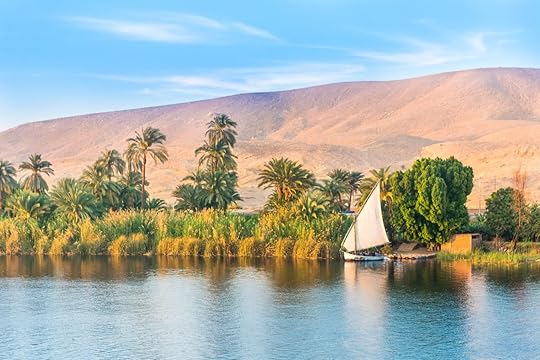
Photo: Alexandree/Shutterstock
Traveling by felucca is for a different genre of tourist altogether: It beckons adventurers, daring solo travelers, and outdoors types.
Feluccas are an ancient mode of transport that rely on nothing but wind to reach their destination. They were zipping around the Nile back when Cleopatra’s royal barge sailed her and Julius Caesar.
Feluccas are operated by individual captains who will agree upon a price and itinerary with you in advance. Journeys include meals that the captain prepares. If you thrive on spontaneity, adventure, and authentic, local experiences, a felucca trip might be right for you. The best part of all: Each night, you’ll dock somewhere along the Nile and sleep under the stars.
Nile cruise boats saunter downriver at a leisurely 10 mph. But even at that rate, they outpace feluccas. Regardless of your itinerary, you can expect a felucca journey to take twice as long as a cruise.
Nile cruise itinerariesNile cruises depart from either Aswan or Luxor. Cruises departing from Aswan sail northward; Cruises departing from Luxor sail either north or south.
Regardless, Nile cruise itineraries are temple-focused. And most, if not all, of the extant temples along the river in Upper Egypt were built, or rebuilt, during the Ptolemaic Period of Egypt. This was the last 300 years of Egypt’s existence as an autonomous kingdom, named after the Macedonian-Greek family that ruled at the time: the Ptolemies.
The Ptolemies were descendants of Alexander the Great, Cleopatra VII being the last among them. And despite their ethnically Greek identity, Ptolemaic pharaohs adopted Egyptian customs and endorsed various cults within the ancient Egyptian pantheon.
Aswan to Luxor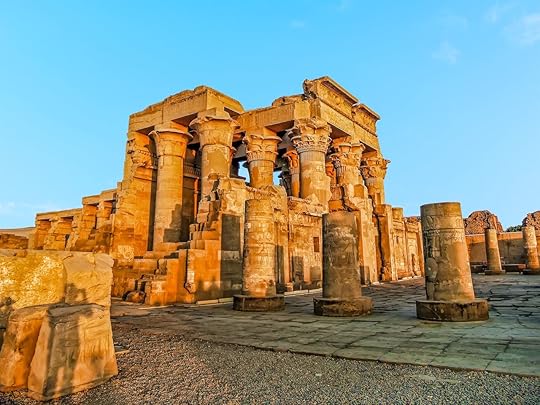
Photo: Nicola Pulham/Shutterstock
A standard Aswan-to-Luxor cruise itinerary takes three days and will hit the two major Ptolemaic temples en-route: Kom Ombo and Edfu.
Kom Ombo is a temple of original Ptolemaic construction devoted to two divinities: Horus, the falcon god and the great crocodile god, Sobek. It bears evidence that worship of crocodiles continued under the patronage of the Ptolemies. Inside a chamber at Kom Ombo, there’s a room filled with mummified forms of these menacing beasts of the Nile. According to papyrus records, living crocodiles were once kept in the temple.
Farther downstream, the temple of Edfu stands as a shrine to Horus, the falcon-headed sky god, the son of Isis and Osiris. Edfu is a Ptolemaic construction on the site of an earlier temple. Here, statues dedicated to the god depicted as a falcon flank the looming entrance to the temple’s antechamber.
After Edfu, you’ll arrive at Luxor, better known as Thebes, during ancient times. Thebes was the most important religious and civic center of Pharaonic Egypt for thousands of years. In modern Luxor, you’ll find a chaotic city bejeweled with Egypt’s most treasured ancient sites. Most cruises will organize tours to the Valley of the Kings, Luxor Temple, Karnak, and the Mortuary Temple of Hatshepsut at this stop.
Northbound cruises from Luxor
Photo: romeovip_md/Shutterstock
Itineraries that travel northward from Luxor are bound for the Dendera complex nearby the modern city of Qena. The Dendera Temple Complex, another one of Ptolemaic construction, was dedicated to the fertility goddess Hathor. Her signature countenance is emblazoned on all the capitals (the top of the columns) surrounding its structure.
AswanWhether you begin or end your journey in Aswan, the main attraction here is the Temple of the goddess, Isis, on the island of Philae. It was originally constructed during the Ptolemaic Golden Age, a period of prosperity early on in the reign of the Greek pharaohs. Today Philae is perhaps the most recognizable ancient monument in Upper Egypt.
Abu Simbel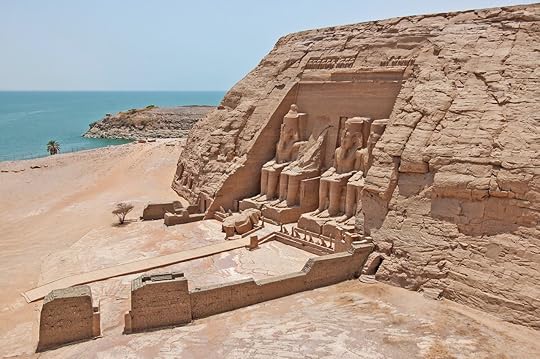
Photo: Paul Vinten/Shutterstock
South of Aswan, only a stone’s throw from the border of Sudan, is Abu Simbel. This outstanding UNESCO World Heritage Site is home to the temple of King Ramses II and his wife Nefertari. It was discovered buried under sand during the first half of the 20th century and has since become one of the great surviving treasures of Pharaonic Egypt.
Abu Simbel is a three-hour drive south of Aswan and is one of Upper Egypt’s must-see attractions. If departing from Aswan, visitors should plan to go before embarking on their Nile cruise. Cruise operators generally don’t arrange Abu Simbel excursions, but any hotel in Aswan will be able to accommodate this.
Getting to departure points from CairoAlmost all international flights to Egypt arrive at Cairo International Airport. So you’ll need to make a plan for getting from the capital to your cruise departure point, either Luxor or Aswan.
Fly: Egyptair operates direct flights between Cairo and Luxor several times per day. The total flight time is one hour, and tickets can range between $40 and $200 depending on how far in advance you book. Cairo-to-Aswan flights are also available but less frequent, and have a total flight duration of 1.25 hours. Flying is a fast, safe, and inexpensive way to get to your cruise departure city.
Overnight train: Take a ride on the Watania Express, the overnight train that connects Cairo with Upper Egypt, for an unforgettable adventure. Trains are advertised as a luxury, which is a highly debatable description. But the charm of the experience is worth it in its own right: You’ll be served dinner and breakfast in your cabin with views of the Nile and the Desert. Tickets can be purchased online or from Ramses Station in central Cairo as late as the day of your trip. The Watania Express leaves daily at 7:45 PM, arrives at Luxor the following morning at 5:55 AM, and continues for abàut 3.5 hours to reach Aswan. The cost for a one-way trip starts at $80.
Bus: There are plenty of buses that run between Cairo and Luxor. But the recommended company for tourists is Go Bus, which has air conditioning, Wi-Fi and typically departs and arrives on time. Travel time from Luxor to Cairo is about eight hours. 
The post Why a Nile cruise is the most comfortable way to see Egypt’s beautiful temples appeared first on Matador Network.
This company will pay you $10,000 to stay in multi-million dollar homes

The best kind of job is the kind that pays you $10,000 to go on vacation. AvantStay, a luxury short-term rental company, is looking for a social media savvy “digital duo” to spend 10 days staying in three luxury multi-million dollar homes. You and your best friend, significant other, or partner in crime will each receive $5,000 for your time.
The fancy properties are located in Coachella Valley, California; Scottsdale, Arizona; and Paradise Valley, Arizona. The Moonshine home in Coachella Valley fits 12 and includes five bedrooms, a pool, fire pit, wet bar, and a full outdoor kitchen. The Primrose in Scottsdale sleeps 23 guests and has a private screening room, pool, spa, basketball court, table tennis, pool table, two outdoor fireplaces, an outdoor grill, sauna, salon, two wet bars, and a putting green. And finally, the Black Rock in Paradise Valley can host up to 18 people in 11 beds, and has a pool, fire pit, in-home bar, and theater.
AvantStay will cover all transportation costs and meals throughout the stay. Expect to document all the wild activities AvantStay has planned, including hot-air balloon rides, private chef dinners, and poolside massages.
Eligible applicants must be over the age of 21 and a resident of the United States. You’ll also need Tik Tok and Instagram Reels skills and a passion for travel. The application process includes showcasing four TikToks or Reels that best showcase your and/or your partner’s content creation capabilities and an essay, 500 words or less, explaining why AvantStay should choose you. Entries open July 8, 2021, at 12:00 AM and end at 11:59 PM PST on July 22, 2021. 
The post This company will pay you $10,000 to stay in multi-million dollar homes appeared first on Matador Network.
Stay in this tiny house with views of 80 volcanoes in France for just $1

Airbnb and French mineral water brand Volvic have teamed up to offer two guests the fantastic opportunity to stay in a unique accommodation in France: a LUMIPOD on a volcanic field.
A LUMIPOD is a round tiny house with panoramic floor-to-ceiling windows, creating the amazing feeling of sleeping outdoors.

Photo: Airbnb
The LUMIPOD, located in the Auvergne-Rhône-Alpes region of France, has amazing views of the 80 volcanoes of the Chaîne des Puys, a UNESCO World Heritage site and the source of Volvic’s natural mineral water.
The Airbnb listing is hosted by award-winning ski mountaineer and long-distance runner Kilian Jornet and is priced at just one euro ($1.18, plus taxes and fees).
“It has been difficult to reconnect with nature after a year of staying inside. Many of us are itching for the opportunity to reset and recharge and what better way to do so than by unplugging, breaking out of your routine in the stunning area of Volvic where our water is born,” said Shweta Harit, global Vice President of marketing at Volvic, in a press release. “We are excited to bring a bucket-list experience to nature-loving consumers via our partnership with Airbnb. We can only hope travelers will feel refreshed from this experience as they see just how much strength nature can truly provide.”

Photo: Airbnb
Guests will begin with a virtual welcome video call from Jornet and then will enjoy plenty of activities, including a guided tour to learn about the rich biodiversity of the natural park; a Michelin-starred, locally sourced dinner by chef Adrien Descouls; a private morning yoga session with views of the volcanoes; a volcanic hike; and, if the weather allows, a hot-air balloon ride.
Booking opens on July 19 at 12:00 AM PT and is first-come, first-served. 
The post Stay in this tiny house with views of 80 volcanoes in France for just $1 appeared first on Matador Network.
Watch: How to hunt for glow-in-the-dark rocks around Lake Superior

Whether or not geology is your thing, you’ll definitely be interested in these glow-in-the-dark rocks you can find in Michigan. By day they look like normal stones, but at night, with a few tools, you could be lucky enough to find Yooperlites®, a special kind of rock that glows in the dark.
@paleocrisHunting for glowing rocks at night along the shores of Lake Superior! #geology #crystals #yooperlite #stones #crystals_hunter #gems #ifoundit #rocks
Yooperlites® are syenite rock rich with fluorescent sodalite, which causes them to be streaked with yellow and orange in the dark, especially under a UV light. The term was coined by Erik Rintamak in 2017, according to Pure Michigan. The best place to find them in the state is the Upper Peninsula along Lake Superior.
If you’re interested in hunting for these stunning glow-in-the-dark rocks, you’ll need some tools: a UV light to be able to easily spot the stones, a flashlight or lamp since you’ll be moving around in the dark, a bag to carry around your finds, and warm clothes with a good pair of waterproof shoes. It can’t hurt to bring some water and snacks, glow sticks to help you retrace your steps, and a rock scooper if you’d like to look for some of the rocks in the lake.
@paleocrisGlowing rocks on the shores of Lake Superior! ##gems ##minerals ##crystals ##geology ##yooperlites ##sodalite ##showandtell ##rocks ##stones ##glowing
The most important thing is to look for the rocks at night so you can really get a good look at the stones. However, you should arrive at your hunting spot before dark to scope out your route. The best season to go is in the spring as the ice melts, or after a storm. And be sure to stay safe by bringing some buddies and staying aware of the water and weather. Follow these steps and you could walk away with the coolest rocks right in the US. 
The post Watch: How to hunt for glow-in-the-dark rocks around Lake Superior appeared first on Matador Network.
How to enjoy the world’s cheapest beer in Hanoi

I’m hunkered down on a plastic stool that can’t be more than six inches off the ground. About to make a joke about how my knees are at my chin, I look up at my dad — who has about eight inches of height on me – and see that his knees are quite literally touching his shoulders.
The two of us are seated in a tiny bar in Hanoi, Vietnam – if you could call it a bar. It’s more of a makeshift hut in which the asphalt from the street serves as the floor, the roof is held up by a couple of deteriorating concrete walls, and a large open archway serves as both the entrance and as a drive-through for motorcyclists waiting in line for a quick beer to-go. There are a few more plastic stools scattered around the 50-square-foot establishment and a single table with a plate of freshly roasted peanuts in the middle. But the focal point of this sparse joint is the keg. It’s also the reason my dad and I squished onto our bar stools: The keg contains the cheapest beer in the world.
The clock has barely struck 9:00 AM and joining us at this early morning hour are a couple of elderly men who pay a visit to this place every day. A quick hello to their friends and they get down to business, handing over their 4,600 or so Vietnamese dong (about 20 cents) in exchange for a cold frothy pint of the inexpensive and wildly popular beer called bia hoi.
Hanoi is famous for its bia hoi, which translates literally to “fresh beer.” Bia hoi is also the phrase used in these small roadside bars like the one I found myself in that morning, taking part in the daily ritual. Bia hoi also embodies an essential adventure for any visitor to Hanoi.
Bia hoi is brewed fresh every single day and has a short shelf life. Each morning, just after dawn, motorbikes zip around Hanoi delivering stainless-steel kegs filled with hours-old bia hoi to all the bars in the city. It lacks preservatives, making it spoil quickly, sometimes going bad by nighttime the same day. To get the freshest taste of Bia hoi, many locals start their day with a frosty fix.
The French introduced beer to Vietnam in the 1890s, and it was originally intended for the upper classes only. At the time there was only one brewery in Hanoi, called Hommel Brewery, and it was an expensive luxury inaccessible to most local people. Years later, when Vietnam gained independence, bia hoi was introduced as an affordable beer option for all of Hanoi’s residents.
Where bia hoi is made and how it tastes
Photo: /Shutterstock
Hanoi Brewery, Viet Ha Brewery, and South East Asia Brewery are the three most popular breweries that make bia hoi today. Their beer is as ubiquitous around the city as their advertising. You would be hard-pressed to go even a block without seeing the names of the breweries in big bold writing on the side of a keg or a sign plastered inside a restaurant window.
Back at the bar, my dad and I are each handed a cold, golden pint of bia hoi in big clear mugs. After one sip it’s easy to see why it’s so popular, aside from its cheap price tag. It’s clean, crisp, and surprisingly refreshing, even at nine in the morning. At only 3 percent alcohol, it’s easy to drink, and having at least a second seems like the norm.
Where to try bia boi
Photo: Vietnam Stock Images/Shutterstock
Later that evening, my dad and I sat down at another bia hoi joint on what locals refer to as Beer Corner. At the intersection of Ta Hien and Luong Ngoc Quyen streets in Hanoi’s labyrinth-like Old Quarter, a different side of the capital emerges as the sun sets. This neighborhood is the heart and soul of the city, with bustling marketplaces, delicious street food, and narrow alleyways you could get lost in exploring, but after dark, the place to be is a sidewalk bia hoi bar enjoying Hanoi’s favorite beverage.
We sit down on the recognizable plastic stools and take in the sights and sounds of the city as it prepares for the evening ahead. The atmosphere is informal. Friends wave down others passing by to join them, neon lights illuminate the narrow street, food vendors pace back and forth between the crowded bars, and conviviality radiates as more plastic stools are pulled up to accommodate the ever-growing number of people.
Lively music fills the streets as beers slosh onto the sidewalk. I take a sip of the familiar ice-cold, frothy ale, which is beginning to taste of comfort and calmness, very much welcomed as an antidote to the hectic pace of Hanoi. It becomes clear that the allure of bia hoi is much more than the drink itself or its wallet-friendly price — it’s central to the ritual of relaxing and socializing among friends.
Beer Corner is a great starting point for your bia hoi experience. Wander down the narrow streets to find many lively options with ample sidewalk seating, perfect for people watching. Just down the road, Bia Hoi Ngoc Linh has a great local atmosphere and good food. Beyond the Old Quarter, the French Quarter’s Bia Hoi Thien Nga is rumored to be Hanoi’s first bia hoi bar, and Bia Hoi Nha Hang Truc Bach has lovely views of Truc Bach Lake. 
The post How to enjoy the world’s cheapest beer in Hanoi appeared first on Matador Network.
Everything you need to backpack through Europe

We hope you love the travel gear for Europe we recommend! Just so you know, Matador may collect a small commission from the links on this page if you make a purchase. Listed prices are accurate as of the time of publication.
Having the right gear on an international trip is the key to staying organized. For a backpacking trip around Europe, compact and condensed is the goal. Here is the ultimate gear guide for backpacking in Europe to keep you moving efficiently and with less stress. Each of these items can be purchased through Amazon Prime via the links here, saving you both time and shipping costs.
1. Osprey Farpoint 55 or Fairview 55 backpack
Photo: Osprey
For a backpacking trip in Europe, you’ll need a durable and comfortable backpack. There are two types of backpacks to consider before you hit the road: a “backpacking” backpack, like the ones you see many international travelers using, or a trekking backpack like you’d bring on an overnight hiking trip. A 40- to 65-liter “backpacking” backpack like the Osprey Farpoint 55 or the Osprey Fairview Trek 50 (made for women) is the perfect travel companion. These versatile packs offer a large zippered panel for easy access to the main compartment (it opens like a suitcase), and also come with a daypack that you can fit your laptop in. If you’re planning on doing outdoor adventuring while on the road, a trekking backpack like the Osprey Atmos AG 65 for men and Aura AG 65 for women is also a great choice for its comfortable straps that can double as your travel pack as well if you don’t mind a bit of extra bulkiness around the hips.
Price: $150-$300
2. Fjallraven Kanken Pack
Photo: Fjallraven
Unless you’re going to be carrying your backpack every hour of every day, you’ll need a day bag. If your main backpack doesn’t come with one like the Osprey Farpoint/Fairview mentioned above, having a smaller bag to carry your smaller items when your pack is sitting at the hostel is essential. This Fjallraven Kanken Pack from the Swedish sustainable gear company is the perfect balance between functional and stylish (something that is nice to consider when you’re in Europe). It’s big enough to fit a camera, your water bottle, a pair of shades, and a sweater, but it’s also compact enough to fold into your larger backpack when you’re not using it. Plus, it’s available in a variety of colors.
Price: $65
3. Eagle Creek Pack-it Starter Set
Photo: Eagle Creek
High-quality packing cubes to roll or fold your clothes are a must-have travel accessory for packing efficiently. It’s a lot easier to take out a packing cube to grab an item than to reach for a shirt at the bottom of your bag, just to have all of your other clothes fall out. This Eagle Creek Pack-It Starter Set will help keep your clothes compressed and compartmentalized in your backpack. The folder that comes with the two packing cubes is great for nicer items that you’d like to keep wrinkle-free during your travels.
Price: $40
4. LifeStraw Go water filter bottle
Photo: LifeStraw
Grab a filtered reusable water bottle to save money and reduce plastic usage abroad. If you’re traveling to a country like Greece where it’s not advised to drink the tap water, having a filtered water bottle will not only give you some peace of mind with every sip, but it will help you avoid buying plastic water bottles that might end up floating on beautiful beaches. This trusted LifeStraw Go bottle has a two-stage integrated filter for clean drinking water on the go.
Price: $37
5. Conair Travel Smart All-in-One Adapter with USB
Photo: Conair
Having several travel adapters on hand is always a smart idea if you want to be able to charge your devices. Shop this Travel Smart All-in-One international travel adapter to connect your electronic devices to European outlets, as well as those in China and the US. This one comes with both an EU and UK adapter, along with a USB port.
Price: $29
6. Sea To Summit Travelling Light hanging toiletry bag
Photo: Sea to Summit
A nice hanging toiletry bag will save you the frustration of finding a clean countertop to set your toiletries on at a hostel or Airbnb. You also want a bag that’ll fit all of your goods from back home, but that isn’t too big to avoid over-packing your toiletries. This Sea to Summit Hanging Toiletry Bag is the perfect size, has multiple zip compartments, comes with a built-in mirror, and is also waterproof just in case something happens to spill.
Price: $46.95
7. Lermende TSA approved clear toiletry bag
Photo: Lermende
Along with a hanging toiletry bag, bringing a TSA-approved clear toiletry bag will save you from having to throw away your favorite shampoo bottle at the airport. Airports in Europe tend to be stricter than the US when it comes to limiting liquids to a quart-sized bag and they will usually make you take out all of your liquids to put in their provided plastic bags. Save yourself the trouble by readily storing your liquids in this Lermende TSA-approved clear toiletry bag for a quicker pass through airport security.
Price: $9
8. ProCase Accessories Bag electronics organizer
Photo: ProCase
A compact and heavy-duty electronics organizer is essential for keeping all of your electronics in order. The ProCase accessories bag features some elastic loops for cables, two larger pockets for bigger items like camera chargers, as well as some mesh zipper pockets for smaller items like SD cards and USB flash drives. We love how this one rolls up and can be easily thrown into your backpack.
Price: $8.99
9. RoomyRoc Mesh laundry washing bag
Photo: RoomyRoc
To keep from having to question whether or not you’ve washed a clothing item in your backpack after days or weeks of wandering, make sure to bring a large but foldable laundry bag. This one from RoomyRoc also doubles as a washing bag to help filter out microfibers released from clothing.
Price: $9.99
10. PackTowel Original Quickdry Microfiber Towel
Photo: PackTowel
A microfiber towel is great for when you don’t want to pay for towels at hostels. They’re compact, easily absorb water, and dry quickly. The PackTowel Personal towel is really soft and the towel also folds into the included pouch for convenient storage.
Price: $13.95
11. Anker PowerCore 13000 Portable Charger
Photo: Anker
Mobile phones have become an important part of our lives, and our travels. Having a dependable portable charger can be a lifesaver if you need to use your phone to access travel documents when your battery is low and there are no charging outlets around. The Anker PowerCore 13000 has two high-speed USB ports and has enough power to keep you going for days.
Price: $36.99
12. Master Lock TSA approved luggage lock
Photo: Master Lock
Bringing a lock on your backpacking trip will help keep your personal belongings safe, especially when leaving your backpack at hostels. A combination lock like the Master Lock 4688D is better to have than a key lock (keys are usually easy to lose). The Master lock is also TSA approved, so screeners can inspect and relock your luggage at the airport without damaging it.
Price: $5.99
13. Yamiu travel shoe bags
Photo: Yamiu
You need a way to store your dirty shoes in your backpack without ruining the rest of your clothes and belongings. These Yamiu travel shoe bags are large enough to fit up to a men’s size 14 shoe, are made of waterproof nylon fabric, and also feature a strong zipper.
Price: $13.88
14. First-aid kit
Photo: Johnson + Johnson
This 100-piece first-aid kit can prevent minor mishaps like cuts and scrapes from turning into trip-ruining incidents. Johnson + Johnson’s travel first-aid kit includes all the basic stuff you’ll need to dress, wrap, and cover on the go.
Price: $12
15. Chrome Industries Cobra merino wool hoodie, men’s and women’s options
Photo: Chrome Industries
The number one rule of travel clothing is that it can be worn more than once between a wash. Merino wool is perfect because it absorbs sweat, is light and airy, and can be worn in all seasons as a quick and easy cover. It’s also more sustainable than synthetic or polyester products. Chrome Industries offers the best merino wool travel hoodie, and it’s black — so you know it’ll go well with anything.
Price: $119.95 men’s, $80 women’s 
The post Everything you need to backpack through Europe appeared first on Matador Network.
7 unexpectedly warm dive sites around the world

Tropical destinations are the gold standard for many divers. The water is inviting, the reefs teem with colorful marine life, and in many cases wetsuits are optional. What’s considered cold-water diving is largely subjective. Some divers draw the line at 70 or 75 degrees Fahrenheit while others measure the water temperature by what millimeter wetsuit they’d be comfortable wearing, whether it’s a fullsuit, shorty, or nothing at all. No matter the metric, there are a handful of dive sites around the world that boast warmer waters than most divers would expect — opening up a whole new world of underwater destinations. From Iceland to Arkansas, these are seven of our favorite unexpectedly warm dive sites.
1. Homestead Crater, Utah
Photo: The Crater (The Homestead Crater)/Facebook
About an hour southwest of Salt Lake City, in Midway, Utah, the Homestead Resort offers one of the coolest (well, warmest) diving opportunities in the lower 48: a 10,000-year-old hot spring hidden below a 55-foot-tall karst formation. Created by snowmelt from the Wasatch Mountains, the Homestead Crater is heated by subsurface magma that keeps its mineral-rich waters, which plunge to 65 feet, a balmy 90-96 degrees year-round.
Divers can take a one-hour underwater tour for just $22 Monday through Thursday and $27 Friday through Sunday. Beginners are welcome, and new divers can even get their Open Water certifications inside the crater. Soakers, swimmers, and snorkelers are also welcome. There’s even a paddleboard yoga class on offer.
2. Gozo Island, Malta
Photo: DAAgius/Shutterstock
Europe is not the first continent that comes to mind when we think of warm-water diving, despite the Mediterranean climate down south. For the warmest waters, divers should head to Gozo Island, the second largest island in the Maltese archipelago after Malta, where the summer temperatures hover between 70 and 80 degrees.
Visibility up to 100 feet and a variety of interesting underwater terrain, from swim-throughs to caves, are two of the biggest boons for divers in Gozo Island. The Blue Hole is the most famous dive site in the area, alongside attractions like Zurziep Reef, Cathedral Cave, and Xlendi Bay Tunnel. Three popular wreck sites there are also not to be missed.
3. Sodwana Bay, South Africa
Photo: sirtravelalot/Shutterstock
South Africa’s climate is generally mild, with the average daytime temperature hovering around 60 to 70 degrees depending on the season. The average water temperature is variable but typically similar, which feels a lot colder than it does on dry land. In Sodwana Bay, however, the water is pleasant and swimmable year-round, rarely dropping below 70 degrees with highs up to the low 80s.
Located on the Indian Ocean near the Mozambique border, Sodwana Bay, or Sordies, has been a national park since 1950. It’s home to the southernmost coral reef off the African continent, which attracts not only divers and snorkelers but also anglers. The visibility here is spectacular. Expect to be able to see at least 40 to 50 feet in front of you and as much as 130 feet. Look out for dolphins, whales, sharks, rays, turtles, and over a thousand different fish species as you swim, alongside more than 90 types of corals and sponges.
4. Lake Ouachita, Arkansas
Photo: Kat Byrd I/Shutterstock
Lake Ouachita near Hot Springs, Arkansas, is yet another unexpectedly warm dive site in the contiguous United States. It’s the state’s largest lake with some 40,000 acres of inviting waters and more than 200 islands, which make for the best dive sites.
The water temperature is hard to pin down due to the lake’s thermocline, which refers to layers of water that are variably hot and cold. Even in the warmer months, the surface temperature can range from frigid 40s to balmy 90s, but the sun’s warmth can usually be felt up to 20 feet down. A three-millimeter wetsuit tends to suffice for shallower summer dives; anything deeper may merit seven millimeters. No matter your depth, Lake Ouachita promises solid visibility, at least 20 to 40 feet, as it’s considered one of the cleanest lakes in the country.
5. Lake Kleifarvatn, Iceland
Photo: VicPhotoria/Shutterstock
Iceland is not an unheard-of destination for intrepid divers, but Lake Kleifarvatn, located roughly 30 minutes south of Reykjavik, qualifies as an unexpectedly warm dive site compared to the rest of the country. It’s both the largest lake on the Reykjanes Peninsula and one of the deepest in Iceland, reaching depths up to almost 300 feet.
Geothermal activity explains the uncharacteristically warm waters, which can reach up to 60 degrees at the surface during summer, as the lake lies above the volcanic meeting point of the North American and Eurasian tectonic plates. It’s a shallow dive, capping around 40 feet, but that’s plenty deep to witness the air bubbles rising from the lake floor and even feel the surrounding rocks vibrate from the pressure.
6. Poor Knights Islands, New Zealand
Photo: Danita Delimont/Shutterstock
Despite its proximity to Australia, New Zealand has a much colder climate, meaning chillier waters that are less enticing for many divers. The Poor Knights Islands, off the northern tip of the North Island, are an exception. Though the temperature tends to taper off in the high 70s during summer, the islands sit at the intersection of tropical and temperate waters, with a warm current that’s carried over from Australia’s Coral Sea. The visibility is better from May to September, but November through May has the warmest waters.
Most visitors base themselves in the mainland town of Tutukaka, where several boat services ferry divers to sites like Blue Maomao Arch and Rikoriko, one of the world’s largest sea caves. Dolphins and whales are common sights, as are both Pacific game fish and tons of tropical species. Above all, divers are almost guaranteed to see rays, so keep an eye out.
7. La Jolla, California
Photo: Greg Amptman/Shutterstock
For a famously beachy state, California’s waters skew on the colder side. The water warms up the farther south you go, but even the Catalina Islands off the coast of Los Angeles, one of the most popular areas for scuba, keep many divers bundled up in seven-millimeter wetsuits. For the most unexpectedly warm dive sites in California, set your sights on La Jolla.
La Jolla is located just north of San Diego. It’s not the tropics, but the water here reliably reaches 70 degrees during summer. Among the highlights for divers are La Jolla Cove Ecological Reserve’s kelp forests and canyon wall, as well as boat dives in nearby Wreck Alley. Freediving with hammerhead, mako, and blue sharks is also possible here. 
The post 7 unexpectedly warm dive sites around the world appeared first on Matador Network.
Matador Network's Blog
- Matador Network's profile
- 6 followers



